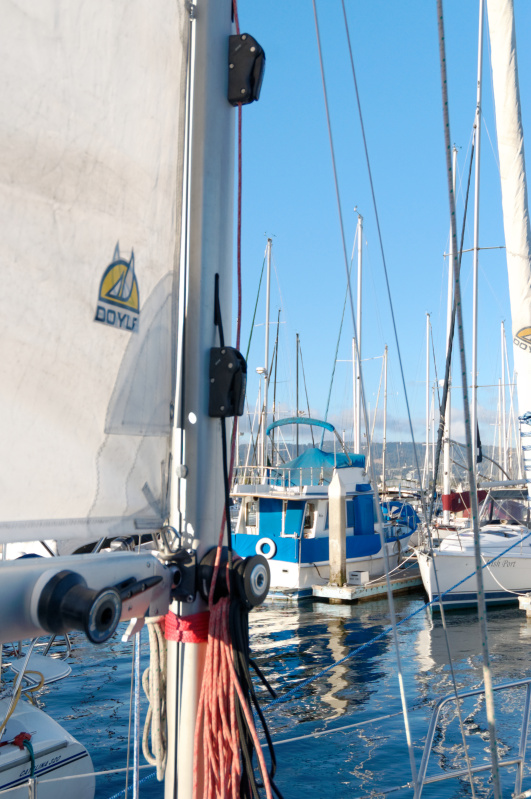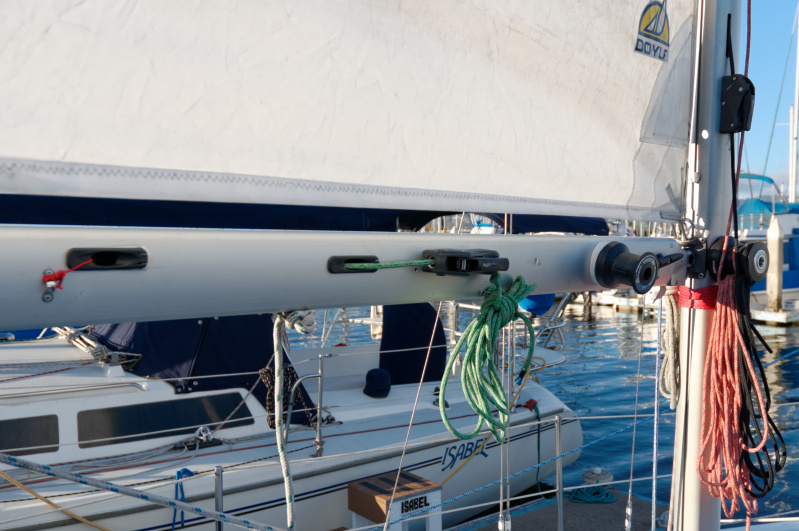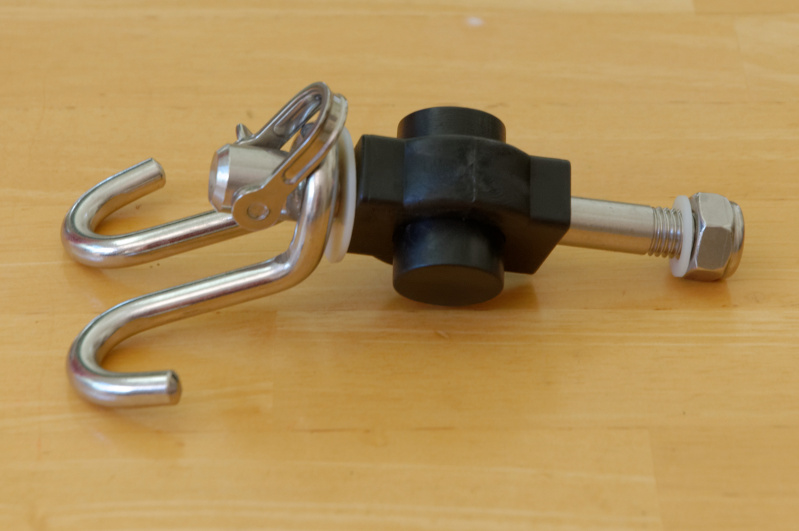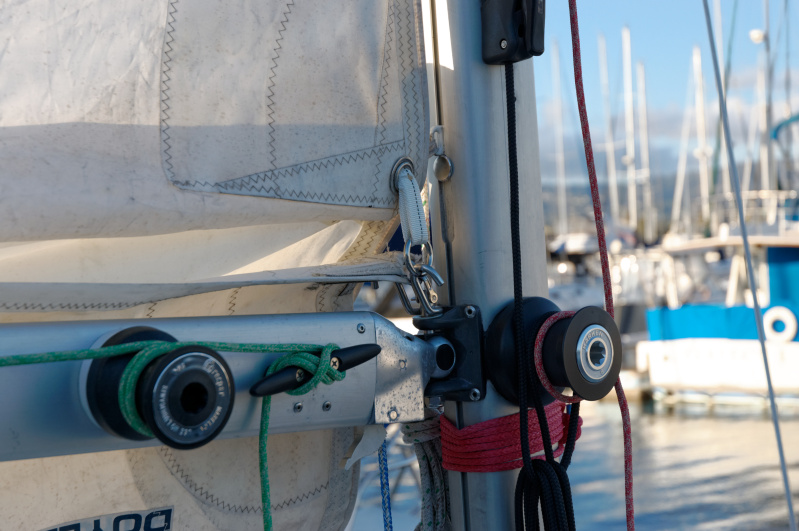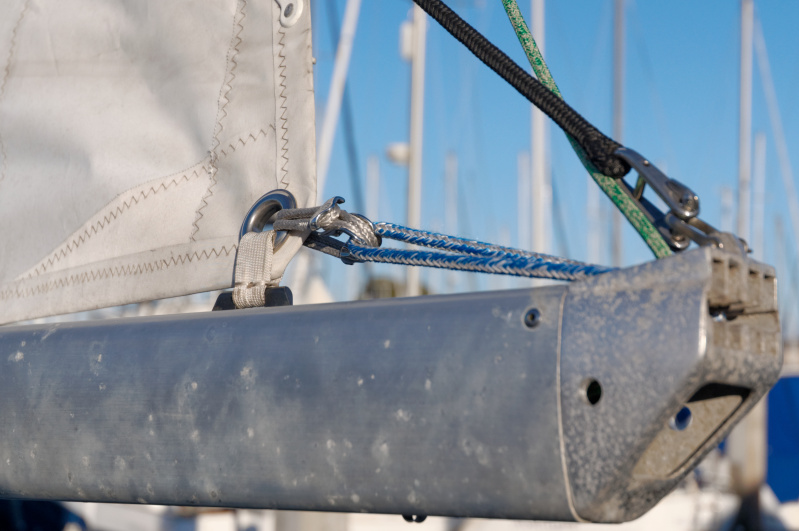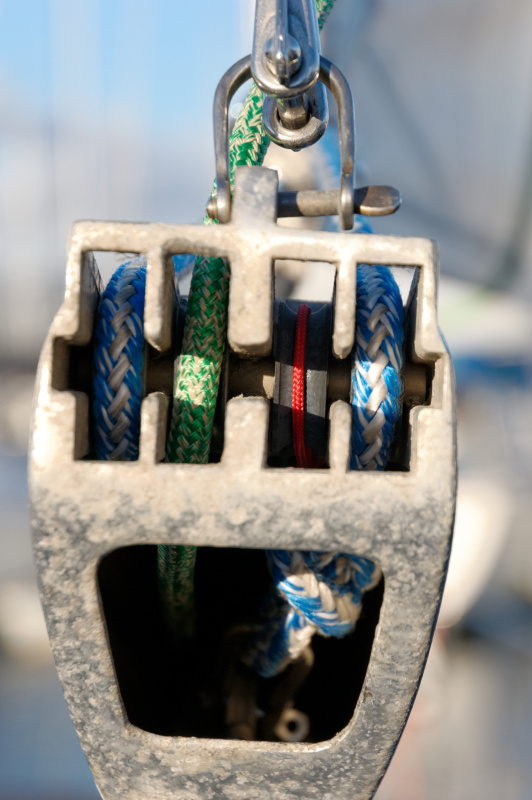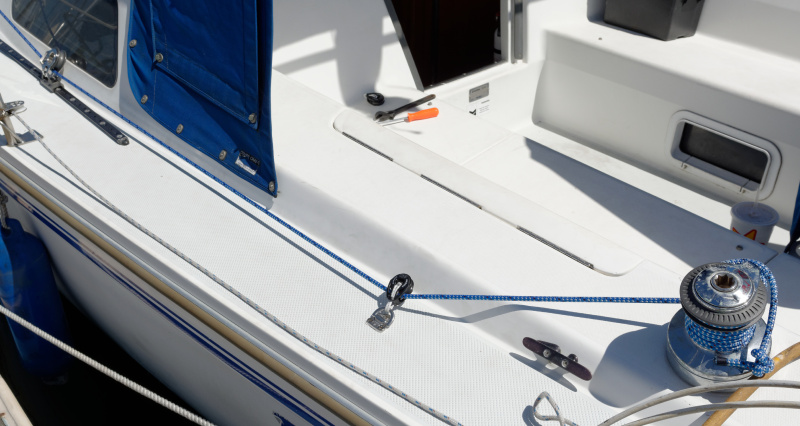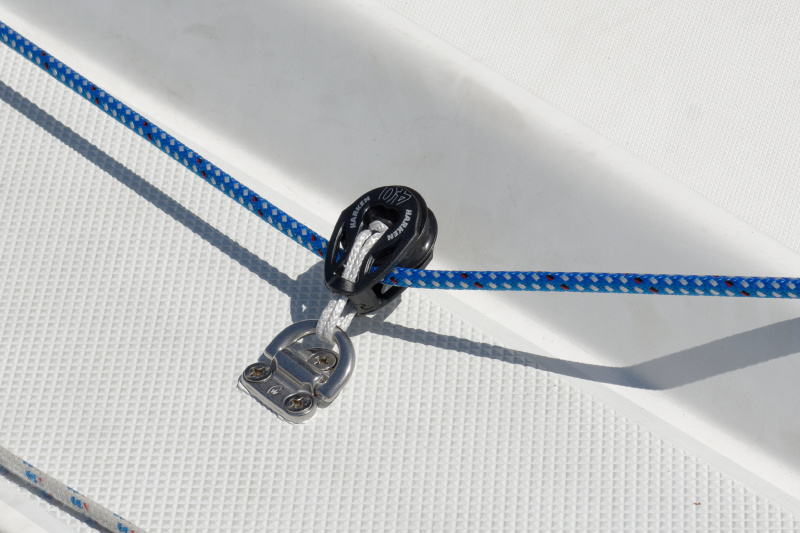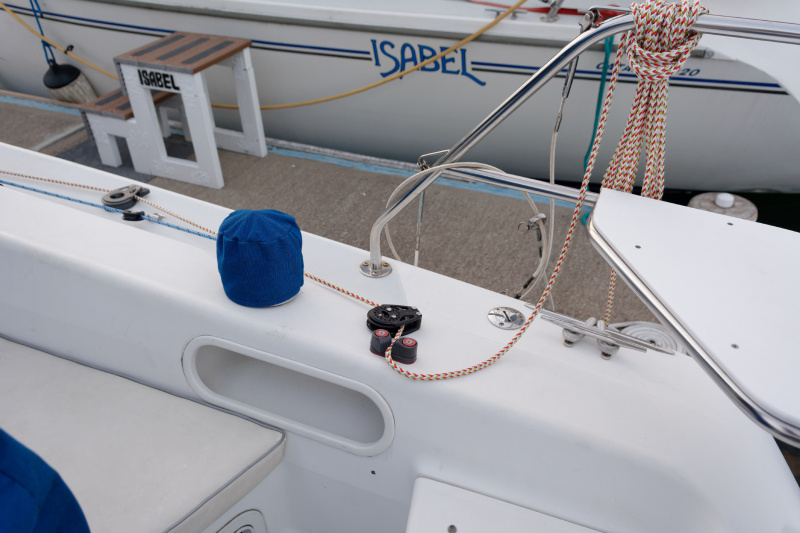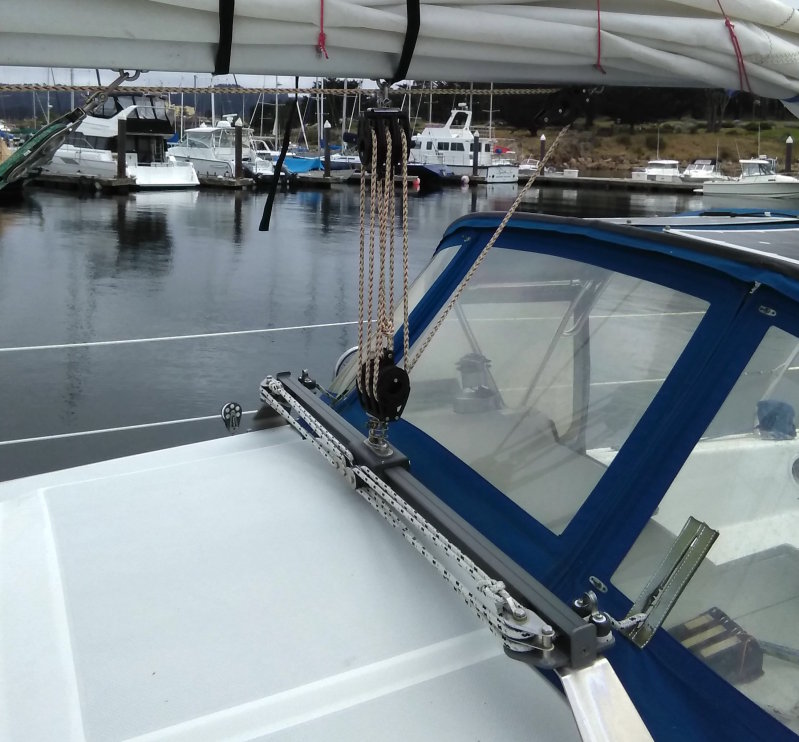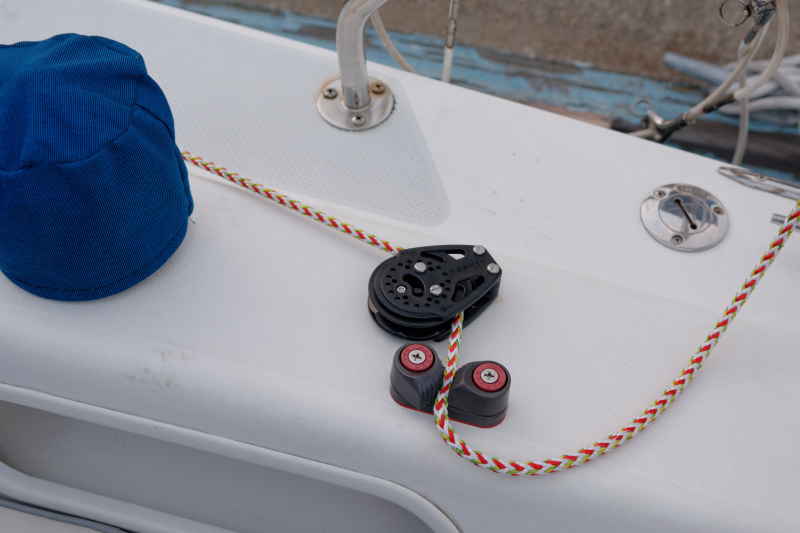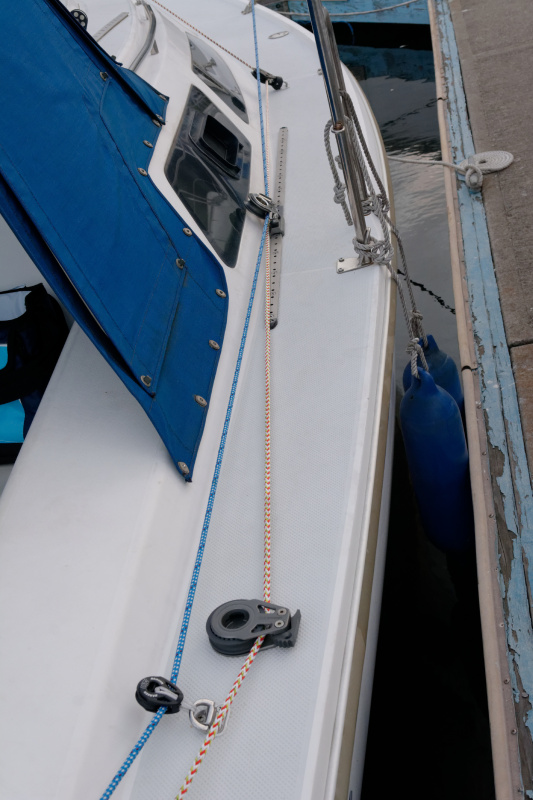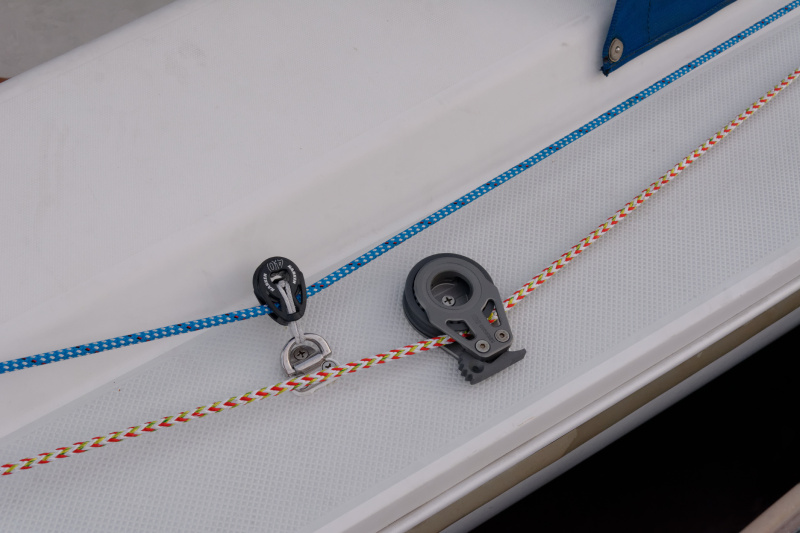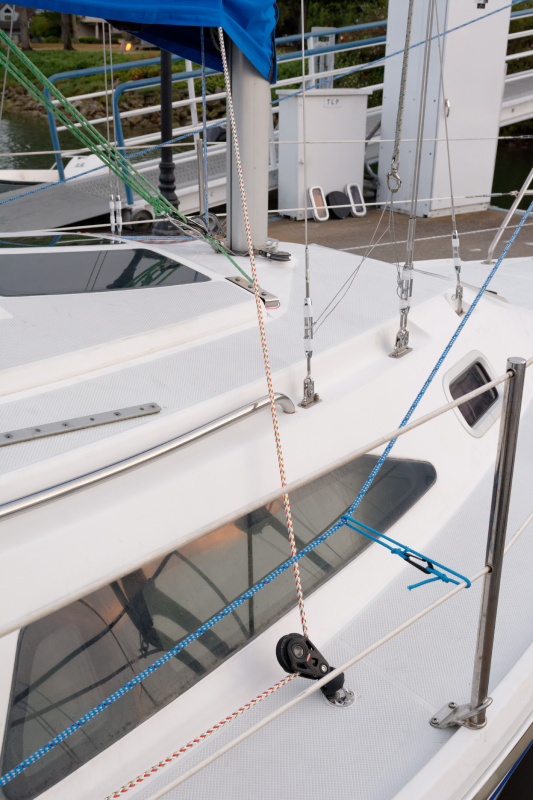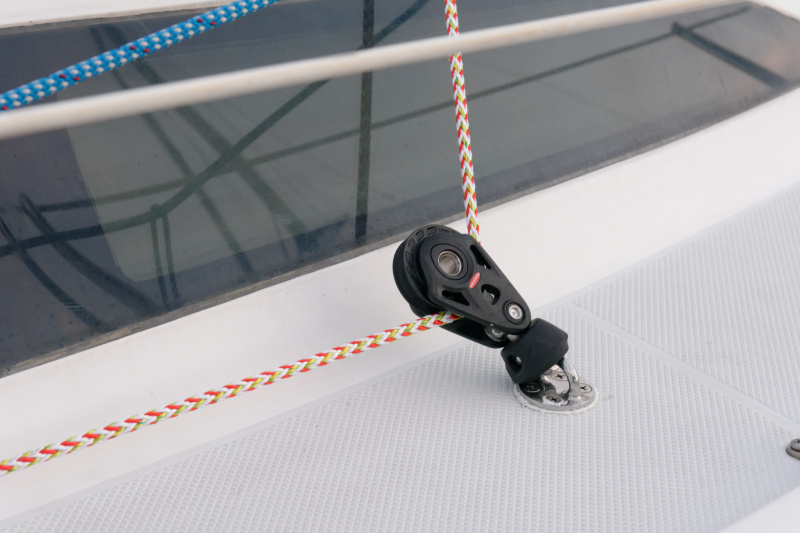| Line |
Length (ft) |
Size |
Type |
Color |
| Main halyard |
78 |
8mm
(5/16") |
Samson
Warpspeed II |
red |
| Jib halyard |
75 |
8mm (5/16") | NER V-100 |
green |
| Topping lift |
78 |
8mm (5/16") | Samson XLS |
black |
| Reef #1 line |
24 |
8mm (5/16") | Samson
Warpspeed II |
green |
| Outhaul |
30 |
8mm (5/16") | FSE
Robline Racing Sheet Pro |
blue |
| Jib sheets |
35 (x2) |
8mm (5/16") | NER Endura
braid |
blue |
| Mainsheet |
66 |
8mm (5/16") | NEW Salsa |
colorful |
| Boom vang |
39 |
8mm (5/16") | Samson
Warpspeed II |
green |
| Preventer |
11 (on
boom) + 43 |
8mm (5/16") | NER Sta
Set |
black
(white flakes) |
| Cunningham |
